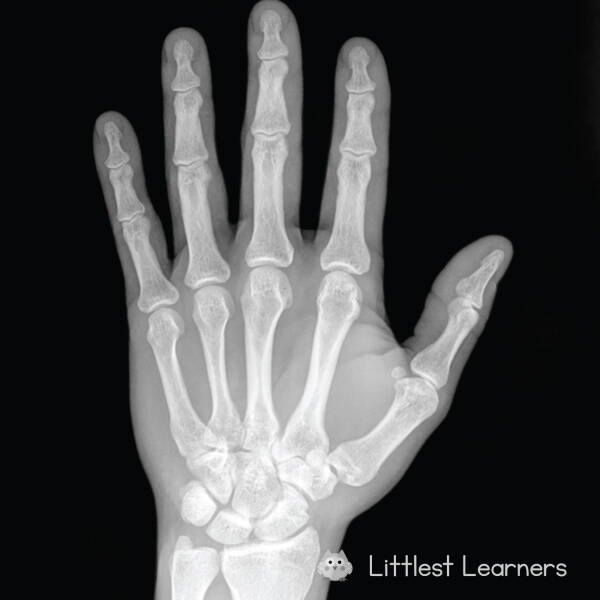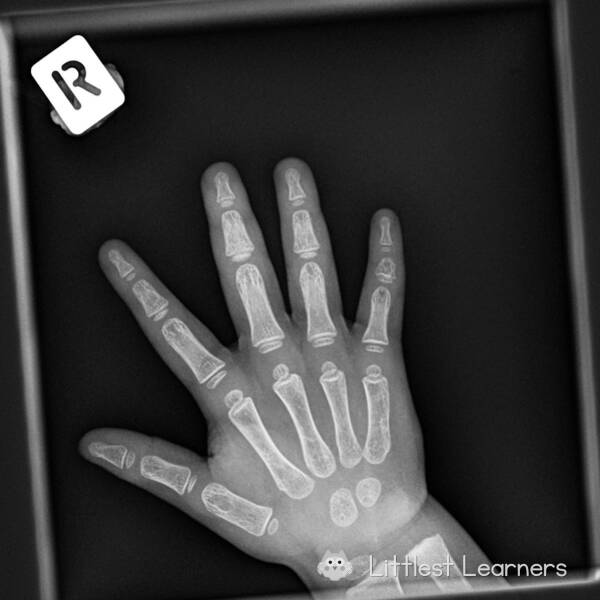There are no items in your basket
Understanding fine motor development

As a teacher, I have parents regularly asking why their preschool aged child isn’t able to write yet. To comprehend the reasoning behind this, it is important to understand both a child's physical development and the stages they progress through.
What are fine motor skills
Fine motor skills refers to the skills that are developed when children learn to use their smaller muscles in the hands, fingers, and wrists. These motor skills develop after children's gross motor skills, which control actions like throwing and kicking balls, as well as walking and jumping.


Here is an X-ray of a typical 7 year old hand (above) and a preschool child’s hand (below).
Between birth - school age, children's hands are still developing and are not fully formed. As you can see in the x-ray above, young children have significant separation between their bones with large spaces between the phalanges in their fingers (finger bones). As a result, young children are unable to achieve refined motor tasks successfully until their hands are further developed.
How do i support fine motor development
So what should I be doing to support my child's fine motor development? PLAY!
Some ways to develop these skills are having children engage in the following activities:
- finger painting
- colouring/ drawing
- cutting
- gluing
- puzzles
- playdough
- digging
- finger painting
- building blocks
- science experiments
- threading
- using large tweesers or tongs
These activities focus on smaller muscle groups. Using the same muscles can help children develop muscle memory, which is when repetition of one action allows that action to be performed almost automatically without much effort.
Fine motor skills between 2-5 years
Although all children progress through stages of fine motor development at their own pace, there are a number of identified skills that children develop between 2-5 years.
Age 2
- imitates a train of 2-4 blocks
- Hand preference more obvious
- holds a thick crayon in their palm (palmer grasp)
- imitates a horizontal or vertical line
- can complete a chunky 3 piece puzzle
- undresses somewhat independently
- unbuttons large buttons
- turns single pages
- opens a door
- threads shoelace through large holes
Age 3
- Makes a tower up to 9 blocks
- grabs a marker with thumb, index finger and middle fingers (pincer grasp)
- copies circle
- colours picture mostly within the lines
- draws simple pictures with recognisable objects or features
- completes 4-5 piece puzzles
- dresses self (basic clothing)
- cuts paper in half
- string smaller beads
- engages in finger play songs
- loves sensory, tactile play
Age 4
- towers 10 blocks
- builds various block structures
- holds a pencil with great refinements (tri-grip)
- colours within the lines
- Can draw the following symbols X / \ | - O (needed for corrrect letter formation)
- Draws a reconisable person
- completes large puzzles
- can fasten buttons, snaps and zippers
- cuts in a basic circle
- pours liquid from a jug
- threads smaller beads with a plastic needle
- traces own hand
Age 5
- towers 13 or more blocks
- copies a triange and asterix
- wants to write
- writes own name
- writes some words and numbers to 5
- writes large letters
- imitates blocks designs
- comepletes puzzles with smaller pieces
- dresses self
- cuts well with scissors
- manipulates paper to cut out shapes
How can you tell if a child has fine motor skill difficulties at a glance?
- Avoidance and/disinterest of fiddly finger skills (avoiding sit down tasks)
- No interest in pencil or scissors skills
- Asking others to draw or write for them
- Lack of persistance in the face of a challenge
- Waiting for parents to dress them or clean their teeth rather than trying themselves.